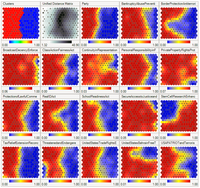
Photo from wikipedia
Abstract In this paper, we proposed a sparse semantic map building method and an outdoor relocalization strategy based on this map. Most existing semantic mapping approaches focus on improving semantic… Click to show full abstract
Abstract In this paper, we proposed a sparse semantic map building method and an outdoor relocalization strategy based on this map. Most existing semantic mapping approaches focus on improving semantic understanding of single frames and retain a large amount of environmental data. Instead, we don't want to locate the UGV precisely, but use the imprecise environmental information to determine the general position of UGV in a large-scale environment like human beings. For this purpose, we divide the environment into environment nodes according to the result of scene understanding. The semantic map of the outdoor environment is obtained by generating topological relations between the environment nodes. In the semantic map, only the information of the nodes is saved, so that the storage space can be kept at a very small level with the increasing size of environment. When the UGV receives a new local semantic map, we evaluate the similarity between local map and global map to determine the possible position of the UGV according to the categories of the left and right nodes and the distance between the current position and the nodes. In order to validate the proposed approach, experiments have been conducted in a large-scale outdoor environment with a real UGV. Depending on the semantic map, the UGV can redefine its position from different starting points.
Journal Title: Neurocomputing
Year Published: 2020
Link to full text (if available)
Share on Social Media: Sign Up to like & get
recommendations!